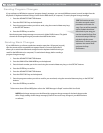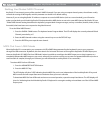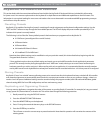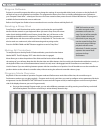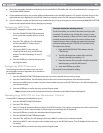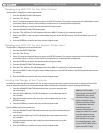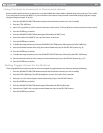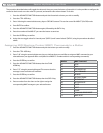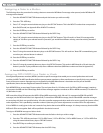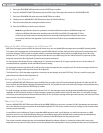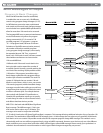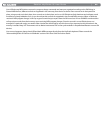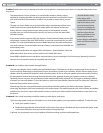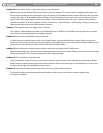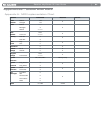
|
24
Session KeyStudio 25 User Guide
Assigning a Note to a Button
The following shows the procedure for setting a button to transmit a MIDI Note On message when pressed, and a MIDI Note O
message when released.
1. Press the ADVANCED FUNCTION button and push the button you wish to modify.
2. Press the CTRL ASGN key.
3. Enter “147” using the numerical data entry keys or the DEC/INC buttons. This is the MIDI CC number that corresponds to
Note On/O mode (see Appendix B for all MIDI CC numbers).
4. Press the ENTER key to conrm.
5. Press the ADVANCED FUNCTION button followed by the DATA 3 key.
6. Enter “100” using the numerical data entry keys or the DEC/INC buttons. This will result in a “Note On” message with a
velocity of 100 when your selected button is pressed. If you would like a dierent velocity, enter that velocity instead of
“100.”
7. Press the ENTER key to conrm.
8. Press the ADVANCED FUNCTION button followed by the DATA 2 key.
9. Enter “0” using the numerical data entry keys or the DEC/INC buttons. This will result in a “Note O” command being sent
out when your selected button is released.
10. Press the ENTER key to conrm.
11. Press the ADVANCED FUNCTION button followed by the DATA 1 key.
12. Enter “64” using the numerical data entry keys or the DEC/INC buttons. This results in MIDI Note 64 or E4 each time the
button is pressed. To play a dierent note, enter a dierent value here (MIDI Note numbers are listed in Appendix E).
13. Press the ENTER key to conrm.
Assigning RPN/NRPN to a Fader or Knob
Non-registered parameter numbers (NRPN’s) are device-specic messages that enable you to control synthesizers and sound
modules via MIDI. The MIDI specication denes open parameter numbers to allow manufacturers to specify their own controllers.
Some of the more common messages are now registered by the MIDI Manufacturer’s Association and are part of the MIDI
specication (hence the term Registered Parameter Numbers – RPN’s).
Each NRPN/RPN has an associated 2-byte number. The two bytes allow for 128 values each. (An RPN or NRPN message is made up
of two parts: the MSB and the LSB message. Both of these messages together constitute an RPN or NRPN command.) This allows for
16,384 values in total.
MIDI controllers 98 and 99 represent the NRPN LSB and MSB respectively, while 100 and 101 represent the RPN LSB and MSB
messages (see the MIDI controllers list in Appendix B). To transmit an NRPN/RPN message, these LSB and MSB controller messages
are sent along with their user-specied values. A further controller message and value needs to be sent to specify the (coarse or ne)
value adjustment. This is specied by controller number 6 (data entry) for coarse adjustments or number 38 for ne adjustments.
A list of NRPN’s is usually given in the user’s manual of any device that receives NRPN messages. It is always necessary that the NRPN
MSB and LSB be sent together. Both will be specied in the device’s manual.
To assign an RPN/NRPN message to a fader or knob:
1. Press the ADVANCED FUNCTION button and move the fader or knob you wish to assign.
2. Press the CTRL ASGN key and enter “132” for RPN Coarse, “133” for RPN Fine, “134” for NRPN Coarse, or “135” for NRPN Fine
using the numerical data entry keys or DEC/INC buttons.
3. Press ENTER key to conrm your selection.
4. Press the ADVANCED FUNCTION button, then the DATA 3 key.



